Peugeot 408 vs VW T-Roc – Which car suits you better?
Two cars, one duel: Peugeot 408 meets VW T-Roc.
Which one wins in performance, efficiency and value for money? Find out now!
Costs and Efficiency:
When it comes to price and running costs, the biggest differences usually appear. This is often where you see which car fits your budget better in the long run.
VW T-Roc has a evident advantage in terms of price – it starts at 26400 £, while the Peugeot 408 costs 35100 £. That’s a price difference of around 8679 £.
Fuel consumption also shows a difference: Peugeot 408 manages with 2.70 L and is therefore significantly more efficient than the VW T-Roc with 5.50 L. The difference is about 2.80 L per 100 km.
Engine and Performance:
Power, torque and acceleration say a lot about how a car feels on the road. This is where you see which model delivers more driving dynamics.
When it comes to engine power, the Peugeot 408 has a noticeable edge – offering 225 HP compared to 150 HP. That’s roughly 75 HP more horsepower.
In acceleration from 0 to 100 km/h, the Peugeot 408 is noticeable quicker – completing the sprint in 7.20 s, while the VW T-Roc takes 8.90 s. That’s about 1.70 s faster.
In terms of top speed, the Peugeot 408 performs minimal better – reaching 233 km/h, while the VW T-Roc tops out at 212 km/h. The difference is around 21 km/h.
There’s also a difference in torque: Peugeot 408 pulls distinct stronger with 360 Nm compared to 250 Nm. That’s about 110 Nm difference.
Space and Everyday Use:
Whether family car or daily driver – which one offers more room, flexibility and comfort?
Both vehicles offer seating for 5 people.
In curb weight, VW T-Roc is barely noticeable lighter – 1465 kg compared to 1544 kg. The difference is around 79 kg.
In terms of boot space, the Peugeot 408 offers to a small extent more room – 536 L compared to 475 L. That’s a difference of about 61 L.
In maximum load capacity, the Peugeot 408 performs somewhat better – up to 1583 L, which is about 233 L more than the VW T-Roc.
When it comes to payload, VW T-Roc to a small extent takes the win – 515 kg compared to 456 kg. That’s a difference of about 59 kg.
Who comes out on top?
Overall, the Peugeot 408 shows itself to be is largely superior and secures the title of DriveDuel Champion.
It convinces with the more balanced overall package and proves to be the more versatile choice for everyday use.
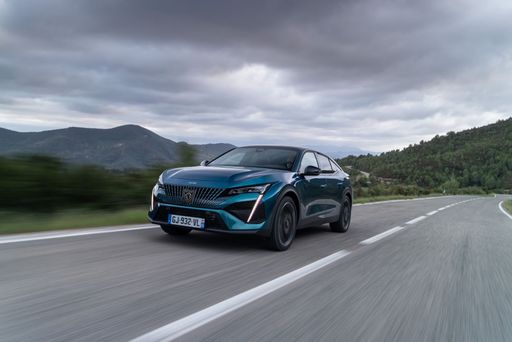 @ Peugeot / Stellantis Media
@ Peugeot / Stellantis Media
Peugeot 408
Peugeot 408
The Peugeot 408 blends a coupe-like roofline with practical sensibility, delivering striking looks and a surprisingly airy, premium-feeling cabin. On the road it prefers comfort and poise over manic thrills, making it a smart, stylish choice for buyers who want something a bit different from the usual family hatchback.
details @ Peugeot / Stellantis Media
@ Peugeot / Stellantis Media
 @ Peugeot / Stellantis Media
@ Peugeot / Stellantis Media
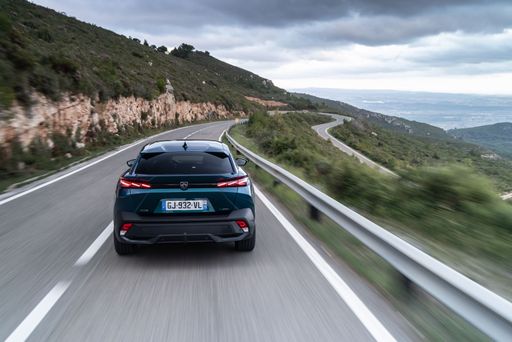 @ Peugeot / Stellantis Media
@ Peugeot / Stellantis Media
 @ Peugeot / Stellantis Media
@ Peugeot / Stellantis Media
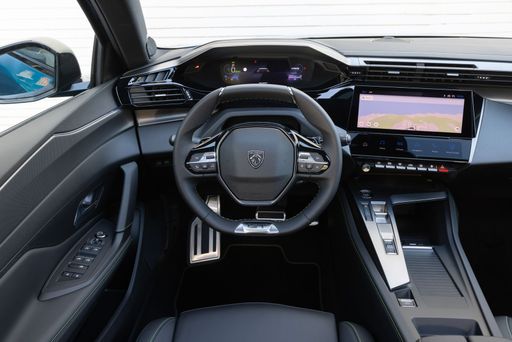 @ Peugeot / Stellantis Media
@ Peugeot / Stellantis Media
VW T-Roc
The VW T-Roc mixes cheeky, coupe-like styling with the everyday sense and space of an SUV, so it looks fun without sacrificing family sense. It’s a likeable all-rounder with tidy road manners and plenty of personality, ideal if you want a car that’s practical enough for chores but entertaining enough to enjoy.
details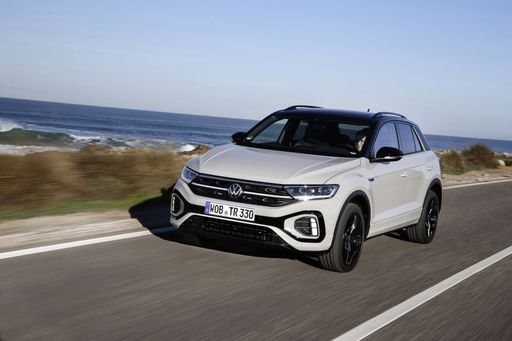 @ Volkswagen AG / VW Media
@ Volkswagen AG / VW Media
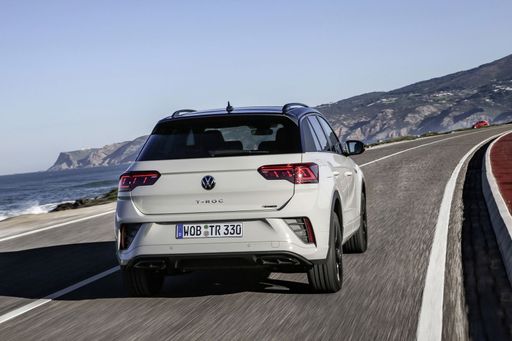 @ Volkswagen AG / VW Media
@ Volkswagen AG / VW Media
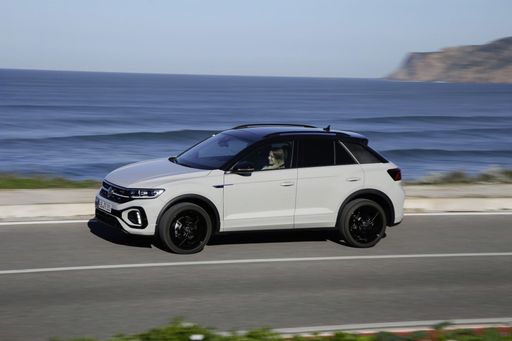 @ Volkswagen AG / VW Media
@ Volkswagen AG / VW Media
 @ Volkswagen AG / VW Media
@ Volkswagen AG / VW Media
 @ Peugeot / Stellantis Media
@ Peugeot / Stellantis Media
|
 @ Volkswagen AG / VW Media
@ Volkswagen AG / VW Media
|
|
|
|
Costs and Consumption |
|
|---|---|
|
Price
35100 - 48000 £
|
Price
26400 - 38000 £
|
|
Consumption L/100km
2.7 - 5.1 L
|
Consumption L/100km
5.5 - 6.3 L
|
|
Consumption kWh/100km
14.80 kWh
|
Consumption kWh/100km
-
|
|
Electric Range
79 - 455 km
|
Electric Range
-
|
|
Battery Capacity
58.20 kWh
|
Battery Capacity
-
|
|
co2
0 - 114 g/km
|
co2
126 - 143 g/km
|
|
Fuel tank capacity
42 - 52 L
|
Fuel tank capacity
50 L
|
Dimensions and Body |
|
|---|---|
|
Body Type
SUV
|
Body Type
SUV
|
|
Seats
5
|
Seats
4 - 5
|
|
Doors
5
|
Doors
2 - 5
|
|
Curb weight
1544 - 1879 kg
|
Curb weight
1465 - 1539 kg
|
|
Trunk capacity
471 - 536 L
|
Trunk capacity
284 - 475 L
|
|
Length
4687 mm
|
Length
4271 - 4373 mm
|
|
Width
1848 mm
|
Width
1811 - 1828 mm
|
|
Height
1478 mm
|
Height
1527 - 1573 mm
|
|
Max trunk capacity
1528 - 1583 L
|
Max trunk capacity
1350 L
|
|
Payload
371 - 456 kg
|
Payload
368 - 515 kg
|
Engine and Performance |
|
|---|---|
|
Engine Type
Electric, Petrol MHEV, Plugin Hybrid
|
Engine Type
Petrol, Petrol MHEV
|
|
Transmission
Automatic
|
Transmission
Manuel, Automatic
|
|
Transmission Detail
Reduction Gearbox, Dual-Clutch Automatic
|
Transmission Detail
Manual Gearbox, Dual-Clutch Automatic
|
|
Drive Type
Front-Wheel Drive
|
Drive Type
Front-Wheel Drive
|
|
Power HP
145 - 225 HP
|
Power HP
115 - 150 HP
|
|
Acceleration 0-100km/h
7.2 - 9.4 s
|
Acceleration 0-100km/h
8.9 - 12.3 s
|
|
Max Speed
160 - 233 km/h
|
Max Speed
187 - 212 km/h
|
|
Torque
230 - 360 Nm
|
Torque
200 - 250 Nm
|
|
Number of Cylinders
4
|
Number of Cylinders
3 - 4
|
|
Power kW
107 - 165 kW
|
Power kW
85 - 110 kW
|
|
Engine capacity
1199 - 1598 cm3
|
Engine capacity
999 - 1498 cm3
|
General |
|
|---|---|
|
Model Year
2024 - 2025
|
Model Year
2024 - 2025
|
|
CO2 Efficiency Class
A, C, B
|
CO2 Efficiency Class
E, D
|
|
Brand
Peugeot
|
Brand
VW
|
What drivetrain options does the Peugeot 408 have?
The Peugeot 408 is offered with Front-Wheel Drive.
The prices and data displayed are estimates based on German list prices and may vary by country. This information is not legally binding.
